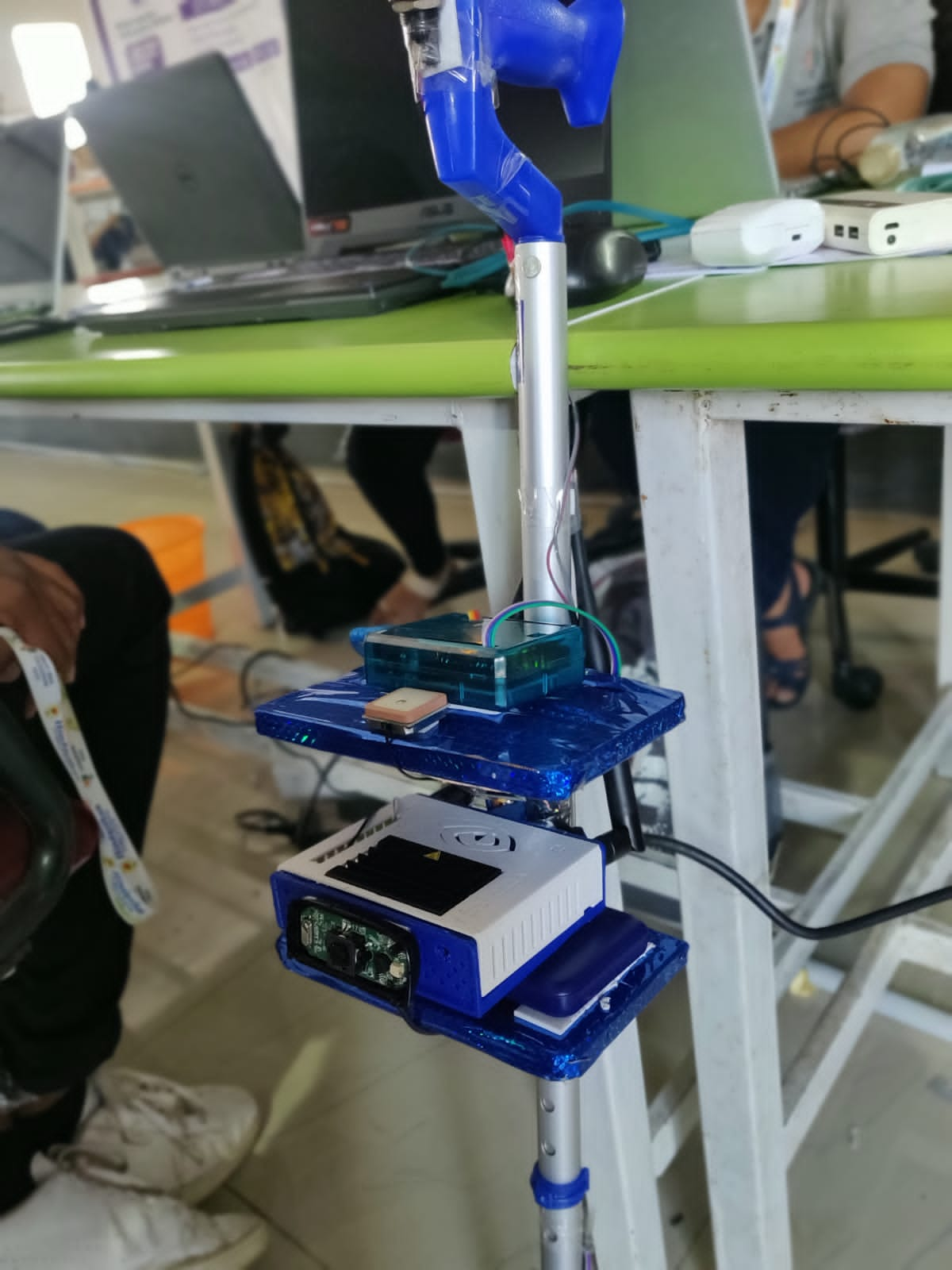AI Powered Smart White Cane
Inspired by the mission to empower visually impaired individuals, I designed and built an AI-powered smart white cane that integrates real-time object detection, GPS tracking, language translation, and various other features to enhance mobility and independence.
View Source CodeProduct Design
The product design of the AI-powered smart white cane incorporates a combination of hardware components, including a Jetson Nano for AI processing, a webcam for real-time object detection, an Arduino board for interfacing with sensors, a GPS sensor for location tracking, a power bank for portable operation, an ultrasonic sensor for object distance detection, Wi-Fi and Bluetooth receivers for connectivity, and Bluetooth earbuds for audio feedback, among other components. This carefully chosen set of technologies enables the cane to deliver a seamless user experience with advanced functionality and mobility assistance.
Our solution was to allow visually impaired to move independently with confidence.
Experiencing the Development
Developing a feature-rich white cane with advanced capabilities presented several challenges throughout the process. Firstly, integrating multiple hardware components, such as the Jetson Nano, webcam, Arduino board, GPS sensor, and US sensor, required careful coordination and optimization to ensure seamless functionality and efficient power consumption. Secondly, implementing real-time object detection and positional analysis demanded sophisticated computer vision algorithms and extensive testing to achieve accurate and reliable results.
Furthermore, incorporating language translation and Google Assistant required integrating complex natural language processing systems and ensuring smooth communication between the AI models and the user interface. Overcoming these technical hurdles demanded extensive research, iterative prototyping, and rigorous testing to create a robust and user-friendly solution. Nonetheless, the experience of developing this AI-powered smart white cane was highly rewarding, as it involved pushing the boundaries of technology to empower visually impaired individuals, fostering independence and improving their overall quality of life.
Meaningful Features
- Real-time object detection
- Obstacle Positional Analysis
- GPS tracking.
- User tracking dashboard.
- Integration with Google Assistant.
- Work in over 100+ languages when online.
- Obstacle distance detection.
- Bluetooth earbuds with locked MAC address for security.
- Text-to-speech (TTS) interface.
- Emergency SOS.
- Automated sms and calling system
- Fall Detection
- Directly connects to cloud DB every given time interval and ubpates data such as latitude, longitude and date time.
Project outcomes
The outcome of the project has been remarkable, with the AI-powered smart white cane winning first prize in the Indian Ministry of Health - Smart India Hackathon 2023 and garnering interest from the government ministry for funding further development, offering the potential to positively impact the lives of visually impaired individuals on a larger scale.

